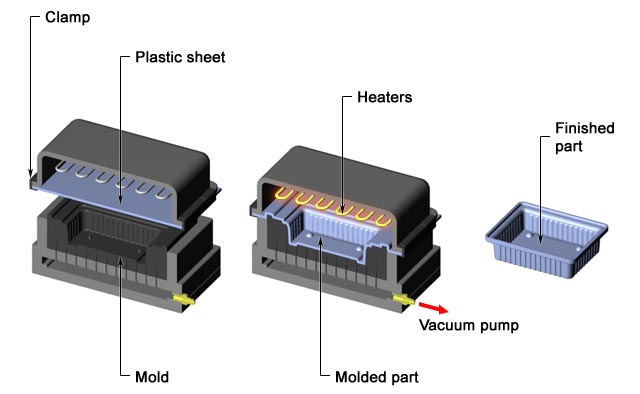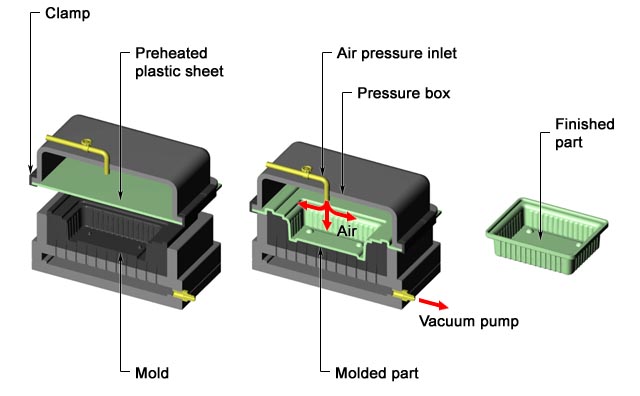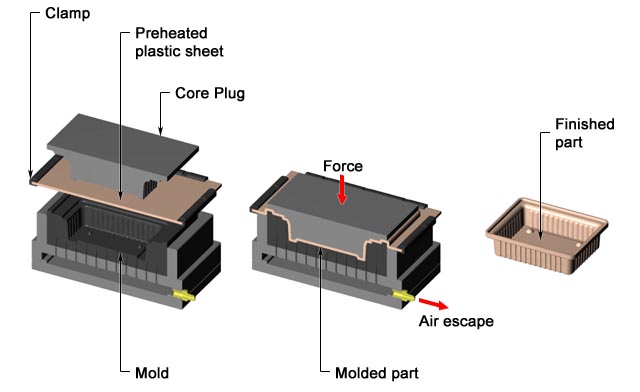Thermoforming is the process of heating a thermoplastic sheet to its softening point, stretching it onto a single-sided mold and holding it in place, while cooling and solidifying into the desired shape. The thermoplastic sheet is clamped in a holding device and heated through an oven by convection or radiant heat until it softens. The sheet is then held horizontally on the mold and pressed or stretched onto the mold using vacuum pressure, air pressure or mechanical force. The softened sheet conforms to the shape of the mold and remains in place until it cools. Then trim off the excess material, the excess material can be reused, mixed with unused plastic, and remade into a finished product.
Thermoforming is usually used for food packaging, but there are also many applications in other fields, such as electronic product trays, toy packaging, medical masks, etc. Rigid sheets of thin size (less than 0.060 inches) are mainly used for disposable packaging, while sheets of thickness (greater than 0.120 inches) are usually used for outer packaging of automobiles, machinery, electronic equipment and cosmetics. Various thermoplastic materials can be used in this process.
DESU thermoforming materials include:
- Polyethylene terephthalate sheet (PET sheet)
- Polypropylene sheet (PP sheet)
- Polystyrene sheet (PS sheet)
- Polyvinyl chloride sheet (PVC sheet)
Thermoforming Technology
Vacuum forming: also known as blister forming. A vacuum is formed between the mold cavity and the thermoplastic sheet. The vacuum pressure forces the sheet to conform to the mold and form the part shape.

Pressure forming: In addition to using a vacuum under the sheet, air pressure (usually 50 psi, but also up to 100 psi) is applied to the back of the sheet to help press it on the mold. This extra force allows thicker sheets to be formed and produces finer details.

Mechanical forming: The thermoplastic sheet is forced into the mold mechanically by direct contact.

